Laser TV UST Projectors
Choosing a Laser TV Ultra Short Throw Projector.
What are the Benefits of a laser TV projector over a regular TV?
What are the drawbacks of a laser TV projector?
What is an ALR/CLR screen and why would i need one?
What else should I look out for when buying?
What Laser TV projectors do you recommend?
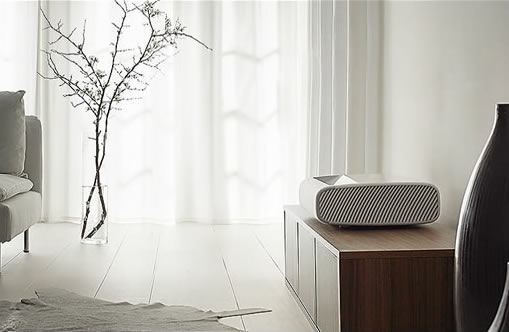
What is laser TV projector?
[top]A Laser TV sometimes known as an Ultra Short Throw projector is a new format of projector bringing together a host of innovations to make big screen projection easier and more versatile.
The big difference between a regular projector and an ultra short throw is the short distance they need to produce a big screen. Measurements differ from model to model but some are capable of producing a massive 100” picture from a mere 11centimetres away. This allows you to pop it on a TV cabinet with literally zero installation requirements.
The Laser light source also makes these a TV replacement for every day use. With the traditional old school projectors they used lamps and were regarded as an occasional use entertainment product but with the new long life laser they can be used every day with no worry about hours and maintenance costs.
Inbuilt soundbars have also been added to many of the UST projectors to make them a one product home theatre. While you can still add in more powerful sound they can quite easily be used on their own with good clear audio.

What are the Benefits of a laser TV projector over a regular TV?
Larger Size
[top]TV’s are now capable of sizes of 80” even up to 98” while still being reasonably transportable. Laser TV projectors or UST projectors can produce 100” to 150” image sizes depending on the model. Even comparing a massive 98” TV to a 120” projection the extra 22” diagonal size results in an incredible increase of screen area. The 98” TV is 2.6474metres squared. The 120” laser TV is 3.9634 metres squared. That is 33.2% more image!

Much Lower Power Consumption
[top]Power consumption is fast becoming a major concern when selecting a dishwasher, fridge or washing machine. Many times, a far more expensive appliance with many extra power efficiency stars will be saving you a few watts of power. With ever increasing power prices it is also a big factor in setting up your home theatre or entertainment room. Comparing a 98” TV they vary a little between brands but they guzzle a hefty power bill of 800 to 900 watts. A laser TV projector will come in at a mere fraction of the power consumption ranging between the brands from 200 to 400 watts.
Easier on the Eyes
[top]Blue Light is a damaging wave length of light produced by phone screens, monitors, TV’s, and even projectors. It causes eye strain and headaches and retinal damage. But projectors even the Laser Ultra Short Throw variety don’t shoot the light directly at you but at a screen or wall. The projection surface absorbs much of the damaging light. Instead of direct light it is reflected light so is far less damaging to the eyes. A good example of this phenomena would be if you were to look into a torch/flashlight it would cause you a lot more eye strain then looking at the spot bouncing back off the wall.
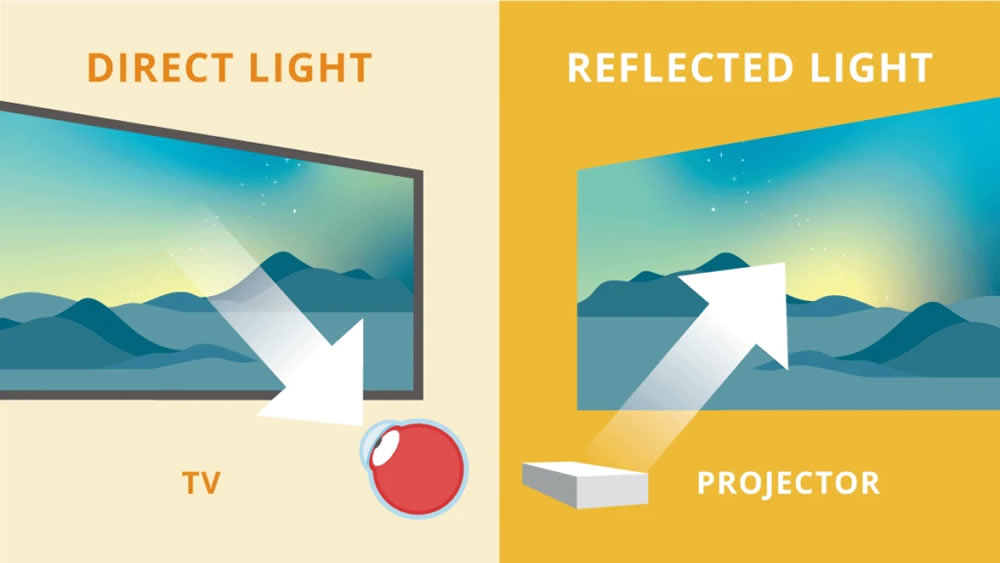
Size and Weight
[top]A large scale TV unfortunately means a very large rectangle to transport and instal. A 98inch TV shipping box will be 2.4 metres long by 1.4 metres tall and weighing in at a hefty 100kilograms. This means a multi person lift, expensive delivery charges and tricky moving bills if you end up moving house. Additional backing may be required if wall mounting or an extra strong TV cabinet if placing it in the traditional way. UST Laser projectors on the other hand usually range between 6-10 kg and are far easier to move around. Can also just be placed on a regular TV cabinet.
What are the drawbacks of a laser TV projector?
Room Lighting Limitations
[top]While a TV can operate with lights on, laser TV’s will require either a little bit of light control or a Light Rejecting screen. If you are viewing movies in the evenings it could easily shoot onto a wall or standard screen. But if there is a bit of light to contend with it is best to pair it with an ARL (Ambient Light Rejecting) or CLR (Ceiling Light Rejecting) screen. These screens accept light from the projector and shoot it back to the audience while rejecting other ambient light in the room.
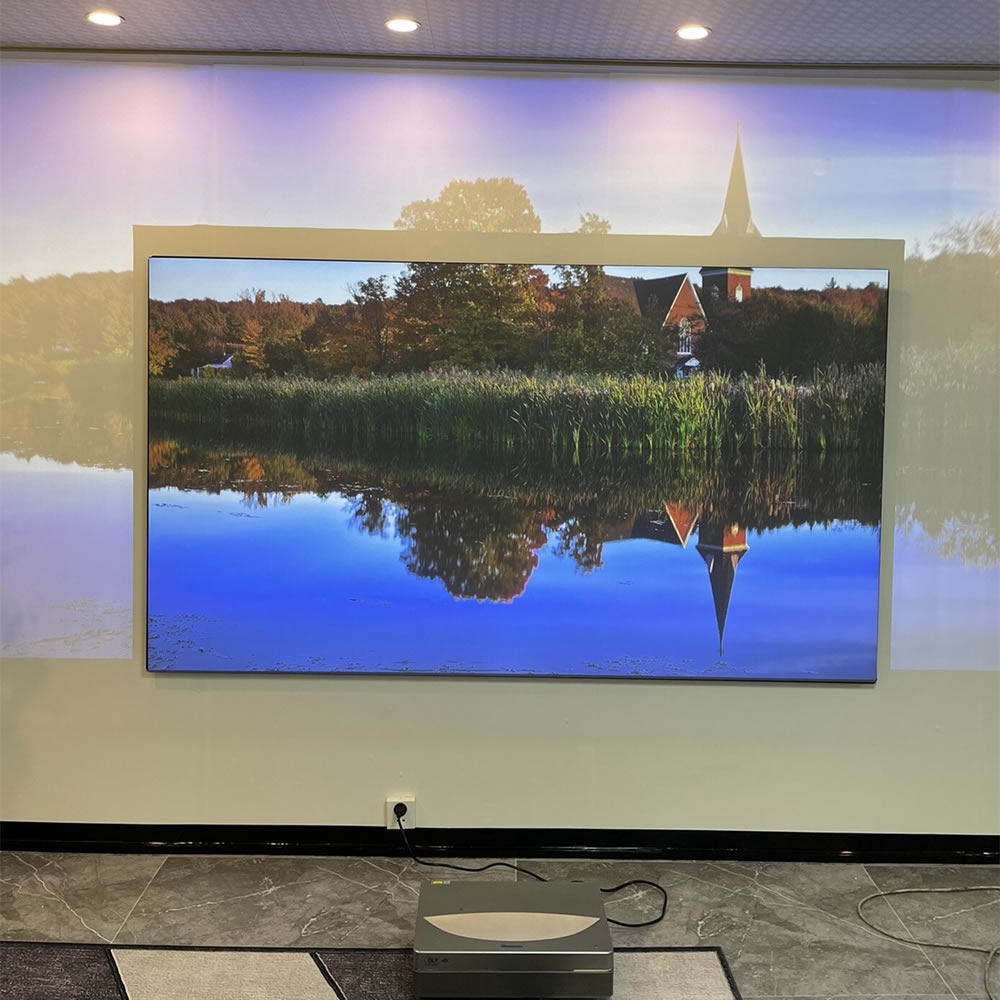
Size Restrictions
[top]Ultra Short Throw lenses are capable of blowing up a massive picture from a super short distance but have some size limitations. Theoretically you could keep pulling them further away but at a certain point you reach the limit of the focus and it will result in a blurry image. The majority of UST projectors/ Laser TV’s can focus from about 90” up to 120” in diagonal size. A few can go even larger up to 130” and 150”.
Requires a perfectly flat surface
[top]The ultra short throw lens will require a perfectly flat surface to produce a flat image. Unfortunately, that does eliminate most rolling screens from use. Whether it is a pull down, motorised or pull up screen they will have the slightest wave in the screen. Not noticeable on a standard throw projector but the short distance lens magnifies these imperfections which will produce a wavy image. Ideally we would recommend a fixed frame screen, they can be used with a flat clean wall, or a high quality tensioned screen.
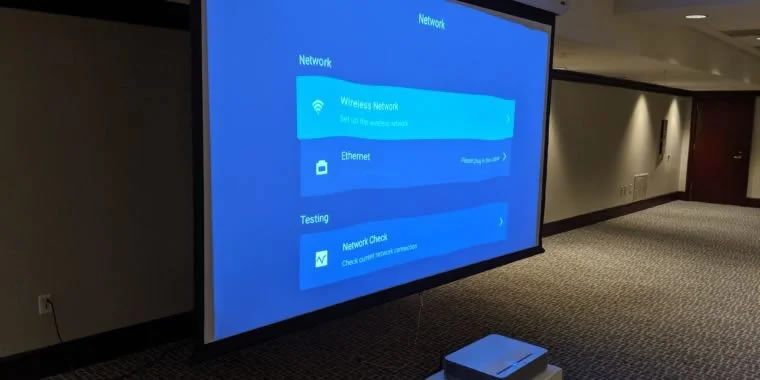
What is an ALR/CLR screen and why would i need one?
[top]These are special screen designed to reject room lighting especially handy in living room environments where it is difficult to limit light. ALR or ambient light rejecting and CLR ceiling light rejecting screens operate in a similar way where they accept the projected image light and reflect it back to the audience. But reject other light sources. Typically they come in a 100” or a 120” size.
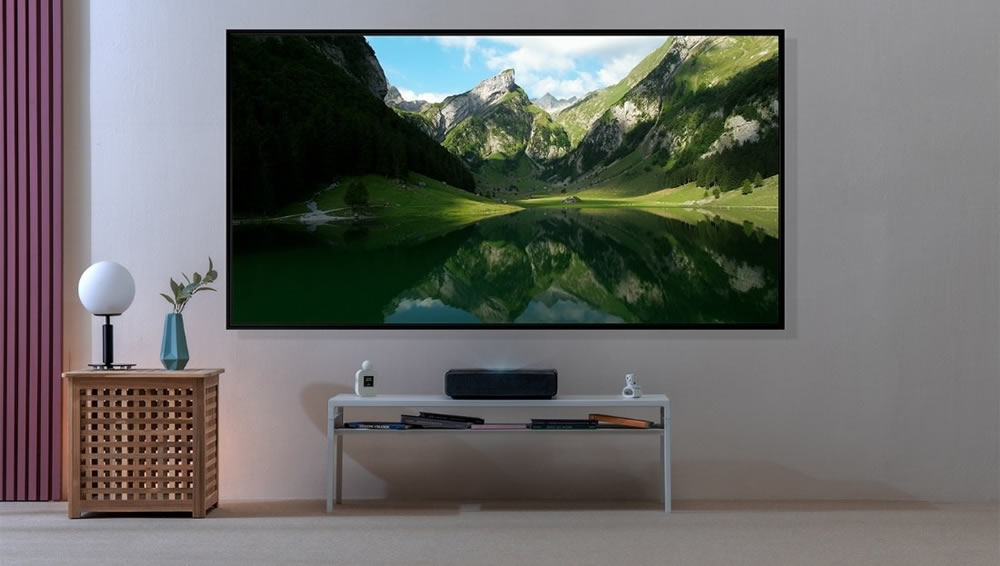
What else should I look out for when buying?
[top]There are a decent range of Laser TV’s out there each with different features so best to have a good
search through the included features to make sure you get one that matches your requirements. Some
will be smart with streaming features and Wi-Fi connectivity.
Though loosing popularity in recent years some will have inbuilt TV tuners and can be plugged into a
traditional aerial.
Some have fast gaming modes for you high speed gamers. And some just have a set of HDMI inputs so
you can plug in any media players smart streaming sticks or gaming consoles.
Epson EH-LS650B
2160p 4K Laser
UST Home Projector

- 3600 ANSI Lumens
- 2,500,000:1 Contrast
- Ultra Short Throw
- Android TV Inbuilt
Epson EH-LS800B
2160p 4K Laser
UST Home Projector

- 4000 ANSI Lumens
- 2,500,000:1 Contrast
- Ultra Short Throw
- Android TV Inbuilt